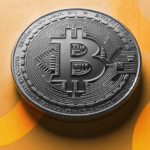In a recent discussion, John D’Agostino, Coinbase’s head of institutional strategy, highlighted the critical need for cryptocurrency and blockchain technology to effectively support artificial intelligence (AI) in financial markets. He drew a stark comparison, likening traditional finance to streaming movies over a dial-up modem, suggesting that it simply cannot accommodate the demands of modern AI-driven transactions.
D’Agostino articulated that conventional financial systems lack the capacity for real-time, machine-to-machine interactions, making them ill-equipped for the future needs of AI agents. He noted that developers are increasingly leveraging AI to create tokens and build Web3 applications, allowing these agents to interact autonomously with various digital services and blockchain protocols. The rapid evolution of this technology suggests a burgeoning trend that D’Agostino believes will continue to expand.
Emphasizing the significance of reliable data, he explained that AI agents depend on accurate information to operate safely. Mistakes stemming from incorrect or outdated data could lead to erroneous decisions, posing significant risks in the financial sector. Unlike humans, who might hesitate to verify data, AI agents are capable of making thousands of rapid decisions, which could exacerbate errors if not properly managed. D’Agostino proposed blockchain as the ideal solution, offering a permanent, public record that remains secure and unaltered.
To further illustrate the synergy between AI and blockchain, he defined AI as “infinitely scalable intelligence” capable of processing vast amounts of information without human limitations, contingent upon continuous data input. Conversely, he termed blockchain an “infinitely scalable source of truth,” which accumulates transactions and maintains the integrity of its records. This collaboration is poised to enhance financial markets’ speed, transparency, and efficiency.
D’Agostino issued a cautionary note regarding the inherent risks posed by the rapid operations of AI agents in financial markets without a trustworthy verification system like blockchain. He described the current financial infrastructure as antiquated, having been developed decades ago, thus ill-suited for the instantaneous demands posed by AI agents. By relying on outdated systems, the potential of AI could be squandered.
He also addressed the comparison between Bitcoin and gold, referring to Bitcoin as “digital gold.” While both are rare, he emphasized Bitcoin’s advantages as a digital, programmable asset that can be transferred globally with ease, contrasting it with gold’s physical limitations.
Regarding institutional adoption of cryptocurrency, D’Agostino acknowledged that large entities such as pension funds and sovereign wealth funds are approaching this space cautiously. Given their management of substantial funds belonging to others, these institutions prioritize risk aversion, opting to invest small amounts initially to monitor market behavior before making more significant commitments. This gradual approach, he argued, may ultimately promote more stable growth within the crypto markets, reducing the likelihood of instability.
The insights shared by D’Agostino underscore the evolving landscape of financial markets, driven by technological advancements and the growing interplay between AI and blockchain. As institutions navigate their adoption of cryptocurrency, the emphasis will remain on cautious and strategic investments to harness the transformative potential of these innovations.







